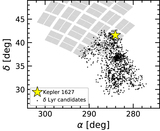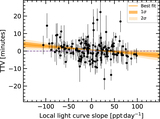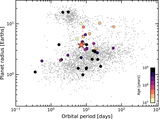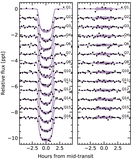Image Details
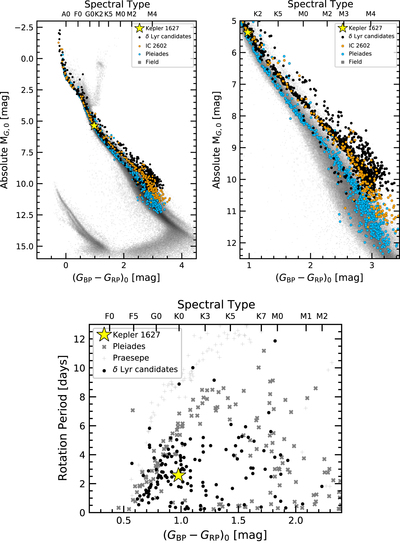
Caption: Figure 3.
The δ Lyr cluster is ﹩{38}_{-5}^{+6}﹩ Myr old. Top: color−absolute magnitude diagram of candidate δ Lyr cluster members, in addition to stars in IC 2602 (≈38 Myr), the Pleiades (≈115 Myr), and the Gaia EDR3 Catalog of Nearby Stars (gray background). The zoomed right panel highlights the pre-main sequence. The δ Lyr cluster and IC 2602 are approximately the same isochronal age. Bottom: TESS and Kepler stellar rotation period vs. dereddened Gaia color, with the Pleiades and Praesepe (650 Myr) shown for reference (Rebull et al. 2016; Douglas et al. 2017). Most candidate δ Lyr cluster members are gyrochronally younger than the Pleiades; outliers are probably field interlopers.
Copyright and Terms & Conditions
© 2022. The Author(s). Published by the American Astronomical Society.



